10 African princesses in the fantastic Nkosozana photo project
Categories: Africa | Photo project
By Pictolic https://pictolic.com/article/10-african-princesses-in-the-fantastic-nkosozana-photo-project.htmlPhotographer Dylan Davis, who lived until the age of 24 in South Africa, shot a series of Nkosozana, consisting of portraits of princesses of African tribes-however, completely fictional. Davis came up with a story for each heroine, picked up clothes and appropriate attributes with stylists, and instead of models (too thin and tall, in his opinion), he called ordinary girls with a bright personality to act. Whether the photographer managed to achieve verisimilitude is up to you to judge.
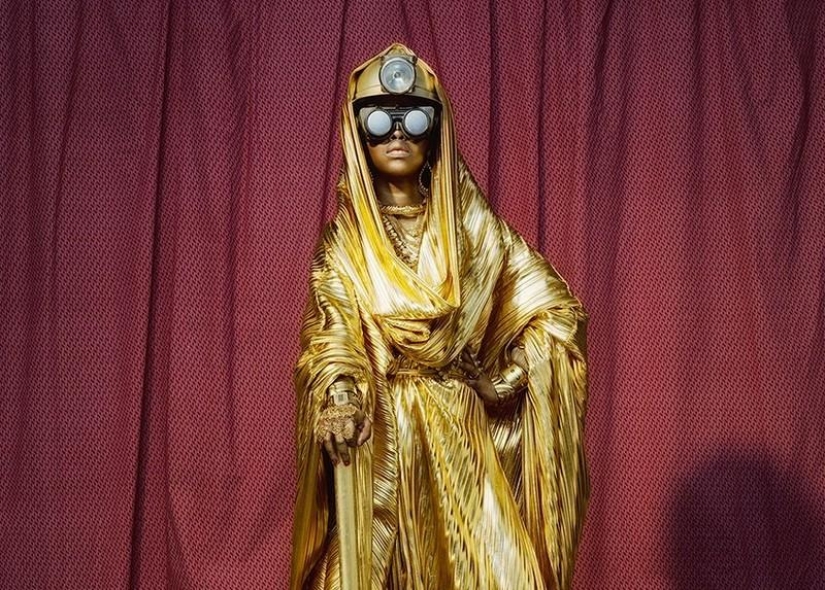

At the back of the carbon black plant is the Letzembaba tribe. After the 2006 earthquake, members of the tribe migrated south in search of coal, where they still live today. The soot required for the production of tires is also used by members of the tribe — men apply it to the face and body during the courtship period. It is believed that the darker the color of the soot, the more likely a young person is to be chosen by the Princess of Zinhle and become the future leader of the tribe.
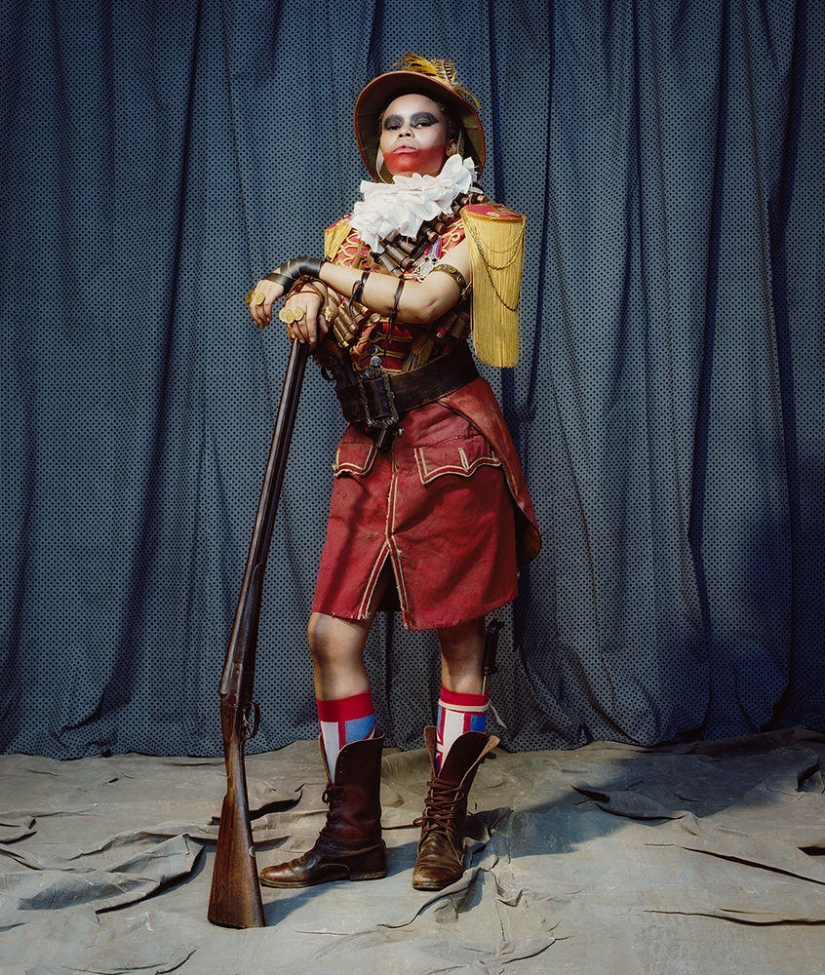
Resisting the invaders during the great war of 1902, superstitious members of the Mzumpufufu tribe dressed the dead in their own clothes-to demonstrate their strength. According to legend, the reason for the strength and power of mzumpufufu is that the members of the tribe ate the flesh of a fallen enemy. Princess Nomuula took over the reins of power after the death of her father, His Majesty Bonbugwe.

The terrible tribe of the Pococacayuris wandered and expanded for a long time, traveling on horseback, until they settled on the Magaliesberg plateau. Trading in old machinery and copper, the tribe members embraced the richness of pop culture fashion, but reinterpreted it in the format of their history, passed down from the older generation and shamans to the young.
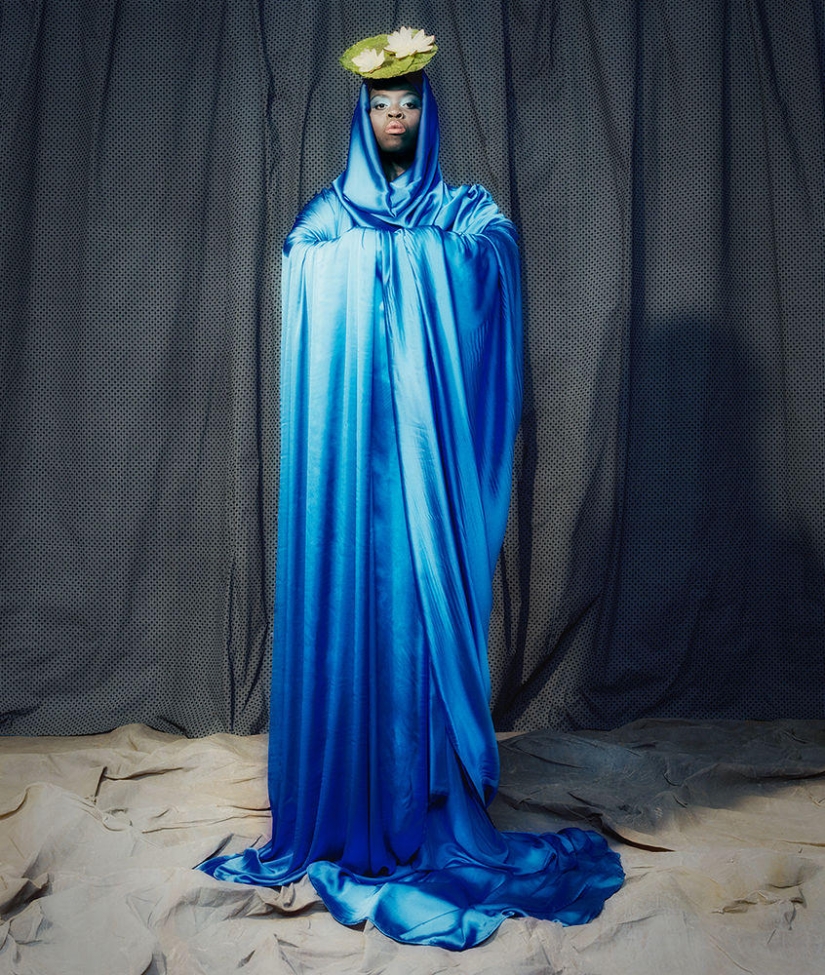
The true inhabitants of the Limpopo River, members of the Kokosidilepha dynasty, believe that the spirit of the great breadwinner lives in the ebb and flow of the water. According to legend, the life-giving properties of water are the reason for the eternal youth of Princess Malefa and her splendor.
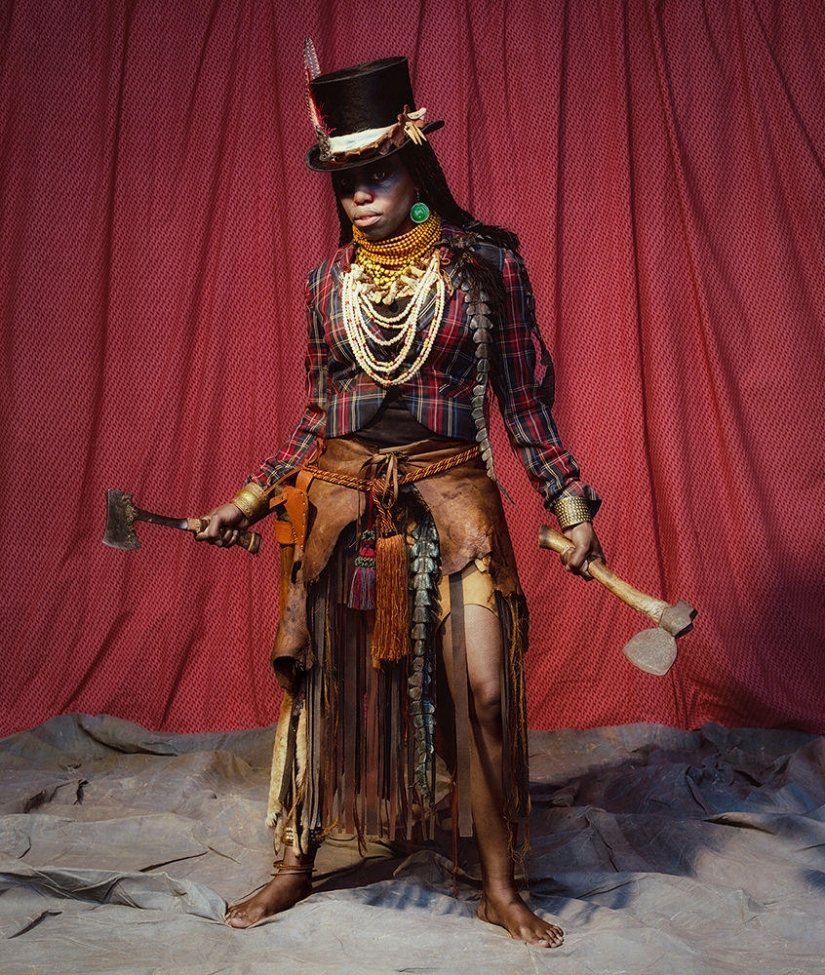
At an altitude of almost 3,000 m, in the north of Lebombo is the ancient Afromontane forest, where the Fufuzimbele clan lives. Dressed in traditional tartan and local headdress, the clan members consider themselves the spiritual successors of the British Caereni tribe, which existed in the west of the Scottish Highlands during the Iron Age.

The ancient baobabs in the low veld near the city of Musina are more than 5,000 years old. For the past 600 years, they have been home to the Movana tribe or, as it is also popularly called, the "bird people". Towering 25-30 m above the ground, the baobabs are an excellent viewing platform and offer excellent visibility compared to other trees, as well as protection from floods and wandering predators.

The sacred talisman of the nomadic prosperous Pfongputu dynasty-the chased redstart-is not easy to see, but it's worth it. This bird is able to imitate and imitate the singing of more than 20 species of other birds in their natural habitat. After the tribal conflicts of 1682, settlements were formed near Cape Town, where Princess Thembisa, the goddess of the Pfongputu dynasty, now lives. She tried on the contents of the forefathers ' wardrobe, whose contents shed light on the history of the tribe's exile and its attempts to live in peace and seclusion.
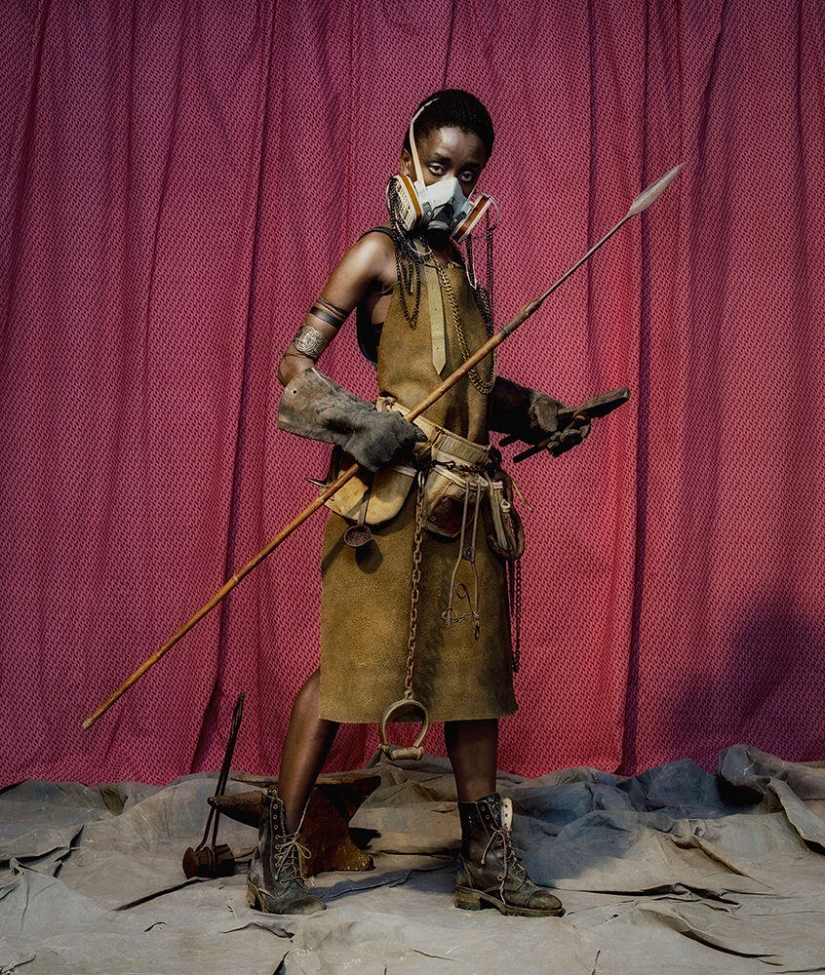
For the warlike Zimazugu tribe, fire is a true symbol of the land. Using his ferocious heat, the Zimazugu were able to gain recognition as the best blacksmiths. Their weapons inspire fear with their strength and durability. He is both admired and feared at the same time. In the warring Gauteng region, it is often an attribute of "male conversation".
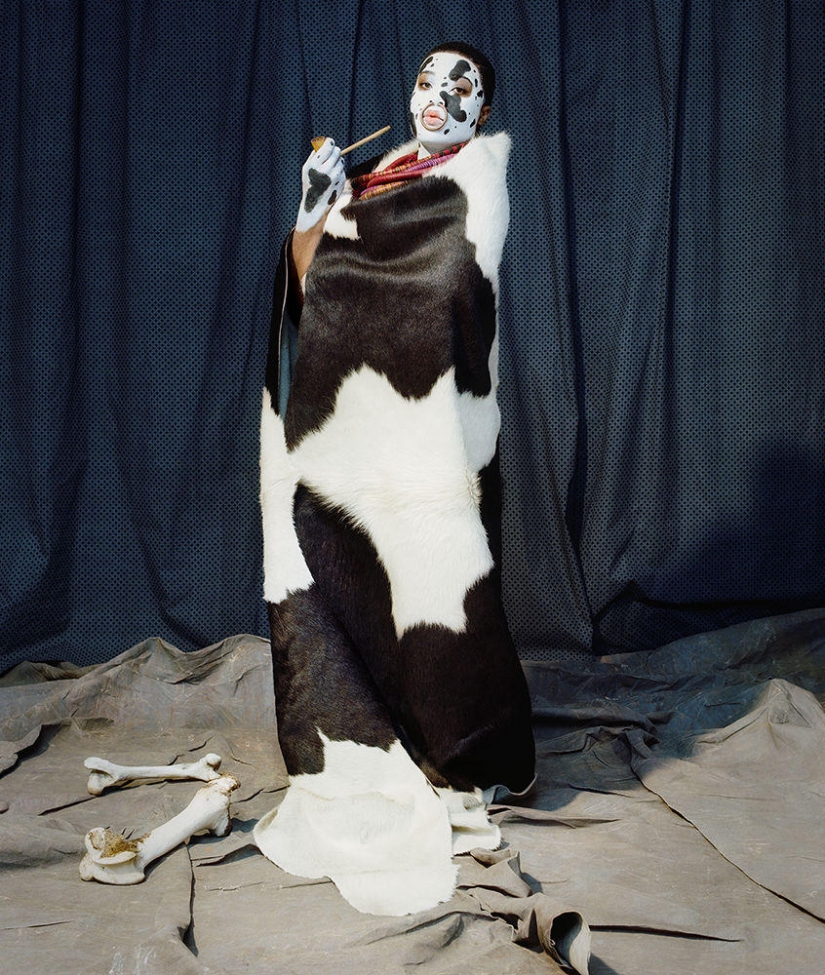
The nomadic people of the Savanna Bavianskloof revere Princess Motlalentwa as the embodiment of the spirit of the wandering Nguni. A symbol of great strength and prosperity, the Zikifeleduda Nguni is valued in the tribal culture as a source of wealth and worship, and is also mentioned in legends.
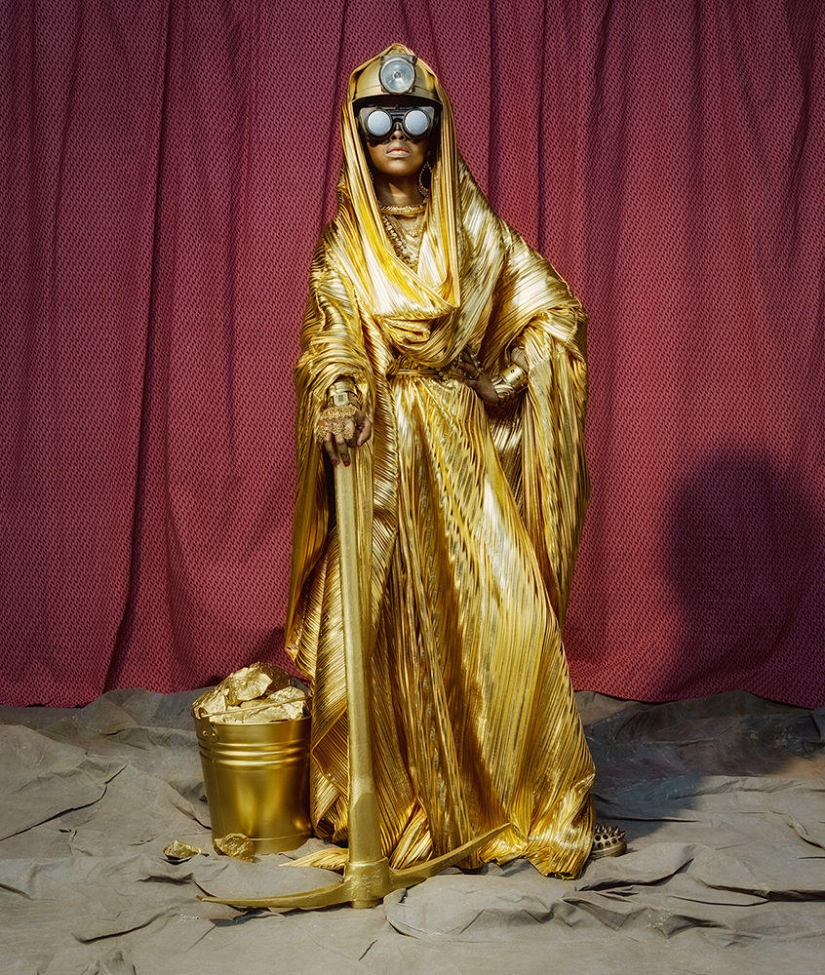
Inhabiting a land of golden sun and amber, the Ndogufolpumpu, the richest and most secretive of the tribes, lives by mining deep underground for gold and precious minerals. With a well-developed infrastructure, the Ndogufolpumpu adapted to mining all of the above in complete darkness, appearing on the surface of the earth only to perform diplomatic missions and perform the wedding ceremony.
Did you know that we have Instagram and Telegram?
Subscribe if you are a connoisseur of beautiful photos and interesting stories!
Categories: Africa photo project
Tags: tribal portrait of the princess
Keywords: Africa | Tribe | Portrait | Princess | Photo project
Post News ArticleRecent articles

There are dolls very similar to living people. And there are so realistic that their appearance can only be explained by magic. ...

Japan is deservedly considered one of the safest countries in the world. Even organized crime there has a "human face" ...
Related articles

What kind of wedding traditions do not happen! The Scots pour dirty slush over the bride, some peoples of India have decided to get ...

Photographer Naira Oganesyan implemented a photo project in which she showed how beautiful children are with parents of different ...
The famous photographer Sandro Miller has worked with the legendary Hollywood actor John Malkovich many times, but when Miller ...

Famous British photographer Bob Carlos Clarke was born in an Irish corps in 1950. In 1969 he moved to England to study art and ...